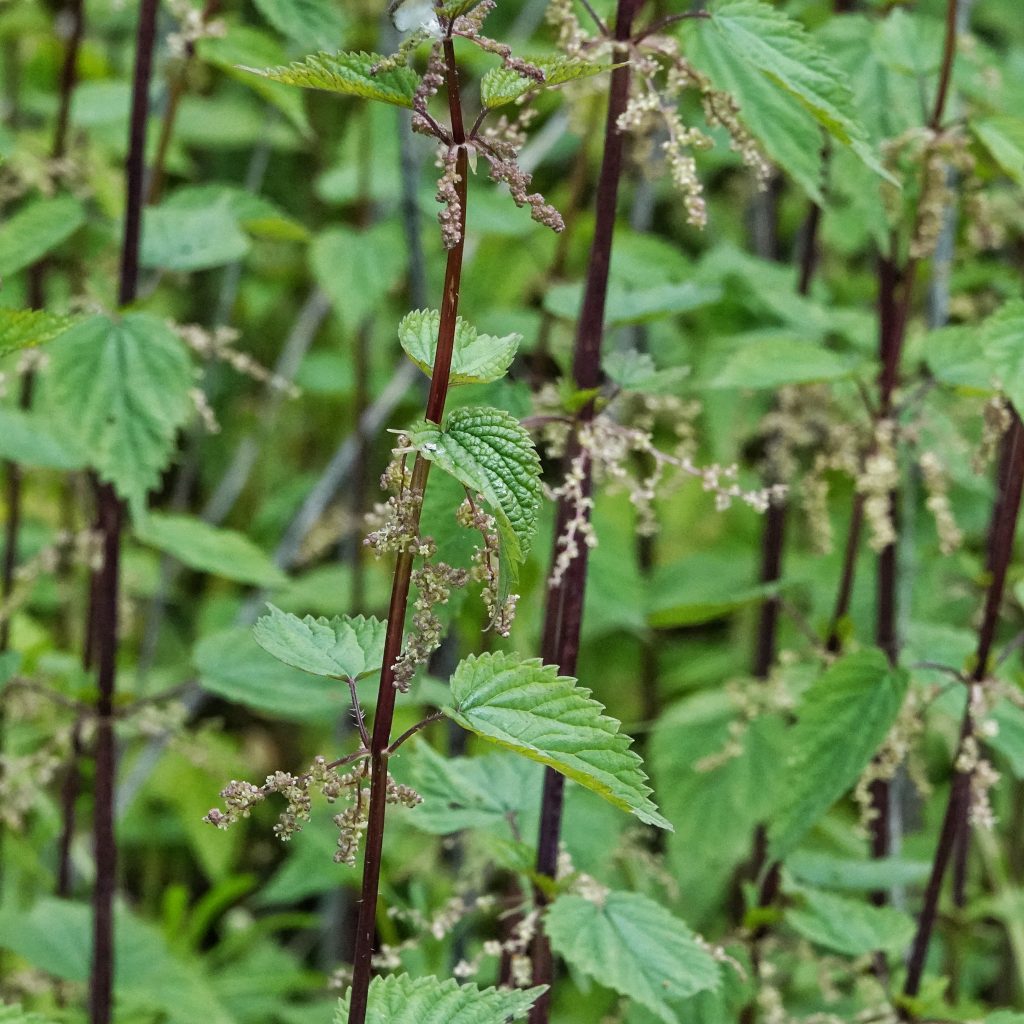
Probably almost everyone reading this has had at least one painful encounter with stinging nettles, and has hopefully already learned to identify and avoid them. Urtica dioica sting us with tiny hollow hairs called trichomes that act like hypodermic needles, imbedding in our skin when we brush against them, and delivering a dose of histamine, acetylcholine, serotonin, and formic acid, amongst other chemicals. Stinging nettles have a long history of use by humans living close to the earth. But of all its uses the strangest to me, who has spent sleepless nights because of run ins with the stuff, is that Roman soldiers would rub themselves with it to stay alert in battle, and some tribes had ceremonies that involved walking naked through patches of stinging nettles, because it would supposedly stimulate visions.
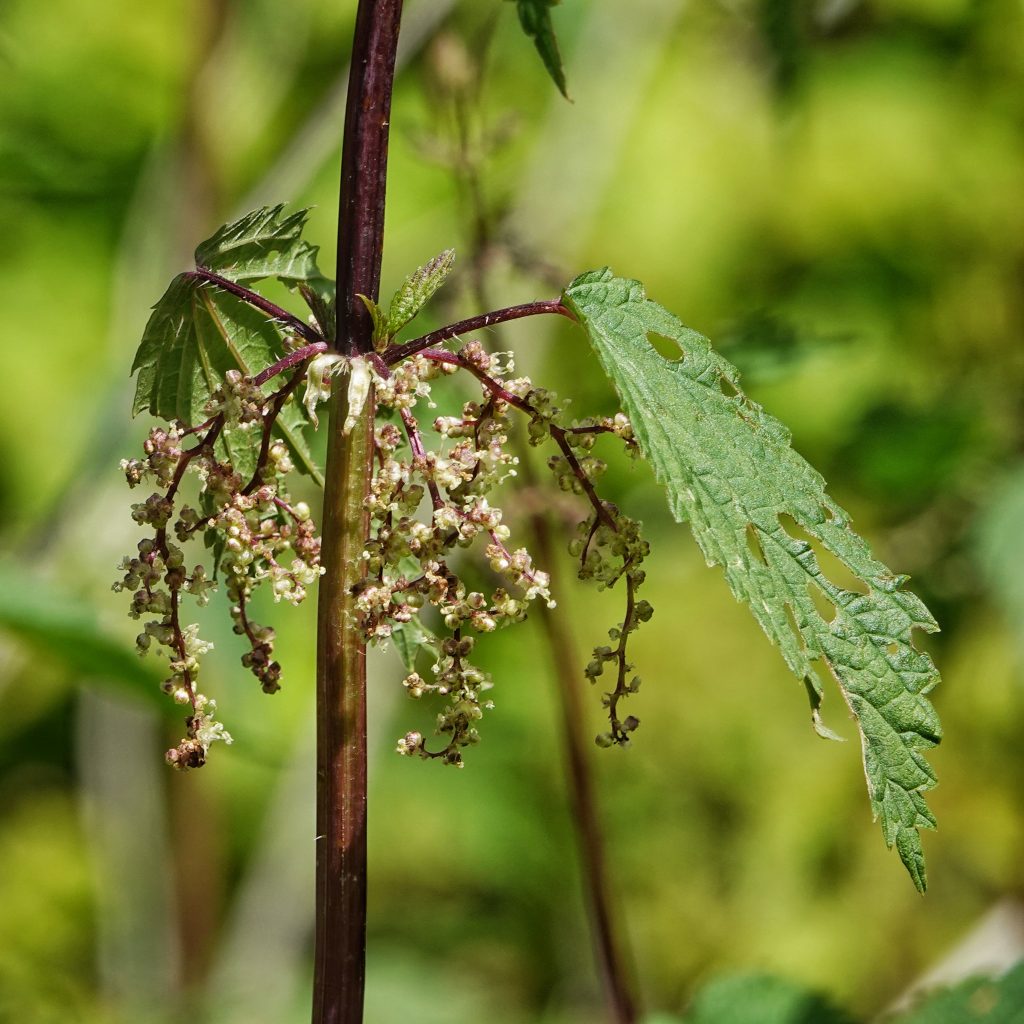
Indigenous peoples in America have used it as a boiled (boiling destroys the chemicals in the sting) green, and it is high in vitamins C and A. They also fried it, used it as a potherb, and boiled it with sugar to make jam. European cultures also use it in many of the same ways, and make beer from it as well. It is said that, for food purposes, it is best to only use young shoots (less than 8” tall).
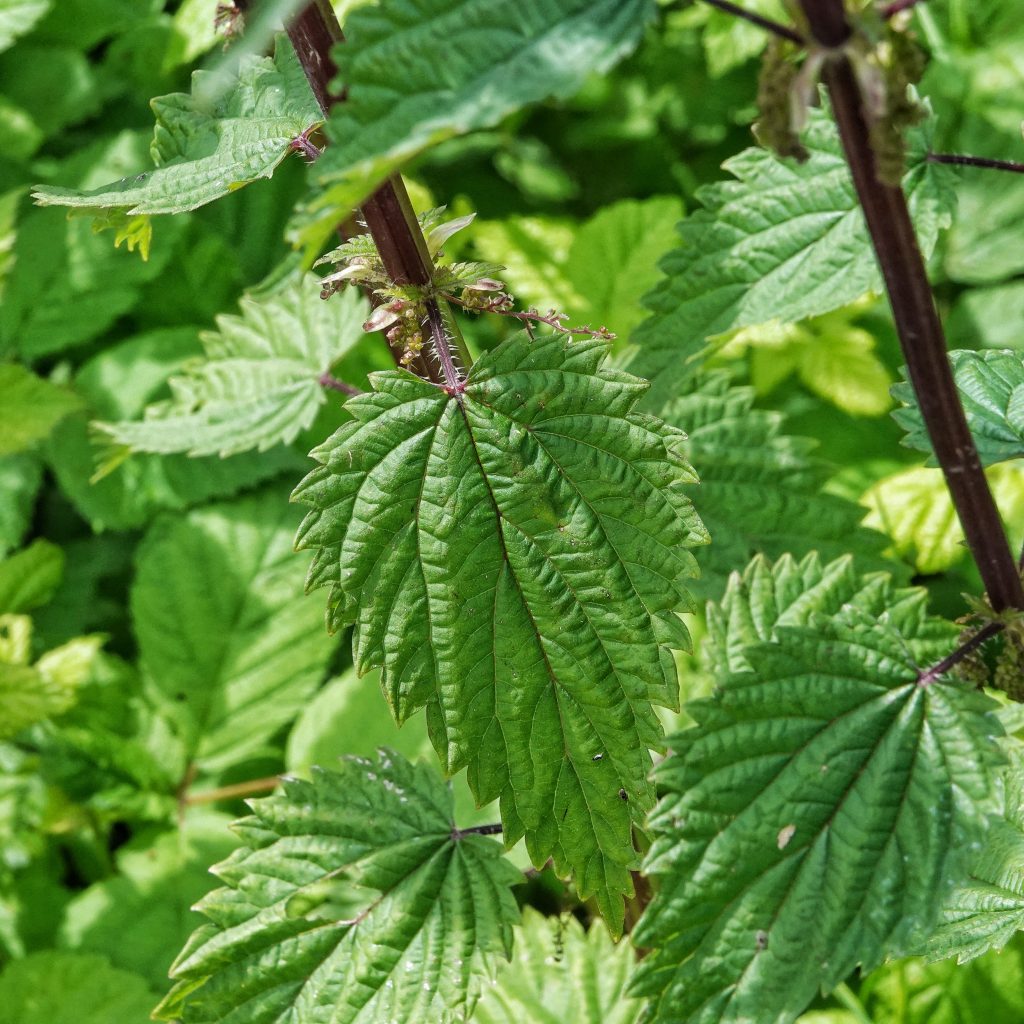
This plant has also been used extensively for treating medical ailments such as nosebleeds, rheumatism, diarrhea, asthma, hay fever, internal bleeding, and as a general analgesic, to poultice wounds, as a general tonic, and to ease the pain of childbirth. And the list goes on and on. It is also used for its fiber, which is woven into fabric, and braided into cordage for a wide variety of purposes, including nets and carry bags, snares, construction materials, and anything else their agile minds could conceive of. For a fuller picture of the uses of this plant, I suggest consulting the North American Ethnobotany database, which contains 222 entries, or the Plants for a Future website.
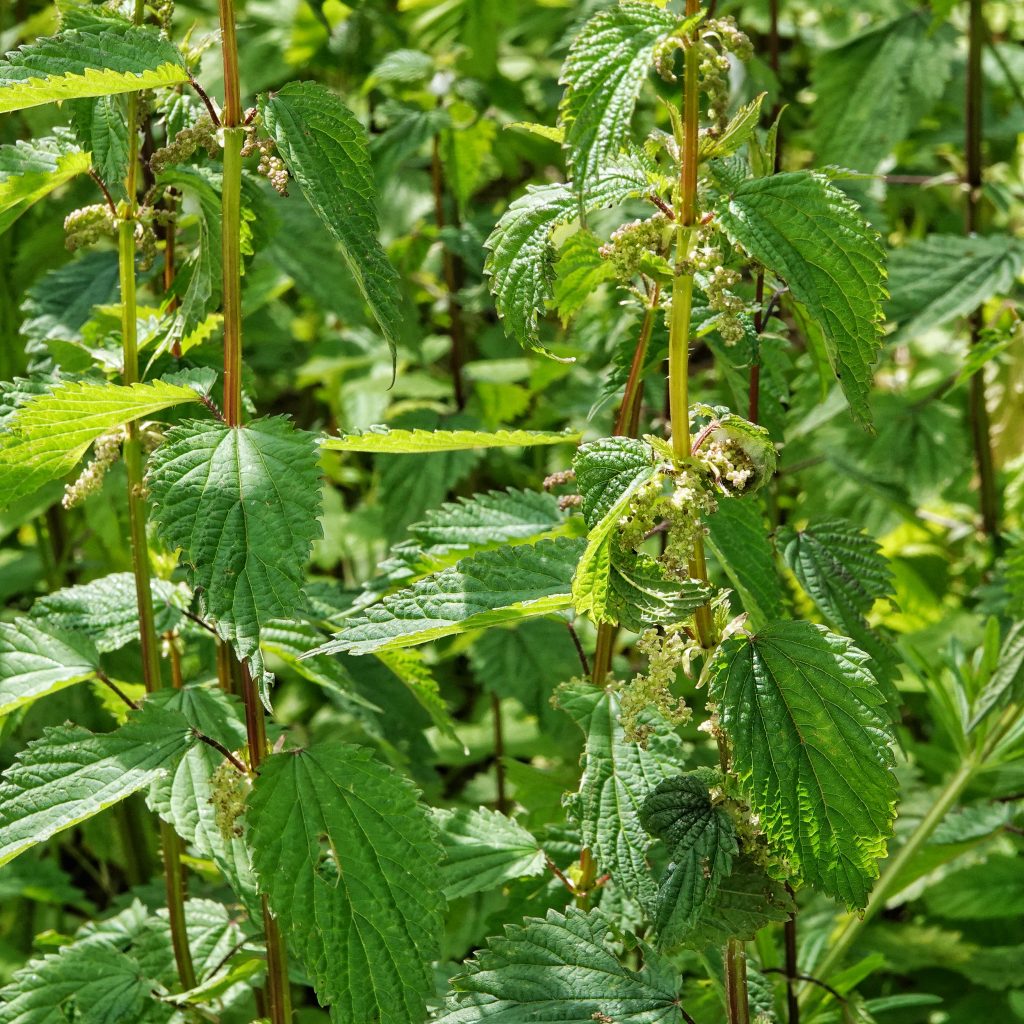
I must admit that since I wasn’t wearing gloves, and tend to do my best to avoid contact with stinging nettles, I didn’t examine these plants to see if they are our native subspecies U. d. gracilis or U. d. holosericea, or the introduced subspecies U. d. dioica. But from my photos I believe they are U. d. gracilis, because our natives only have stinging hairs on the bottom of the leaf, whereas the introduced subspecies has stinging hairs on both sides of the leaf, and U. d. holosericea is found east of the Cascades. They can also be distinguished by the fact that U. d. dioica always has male and female flowers on different plants (hence the appellation dioica which means ‘2 houses’ in Greek), while our native subspecies usually have male and female flowers on the same plant.
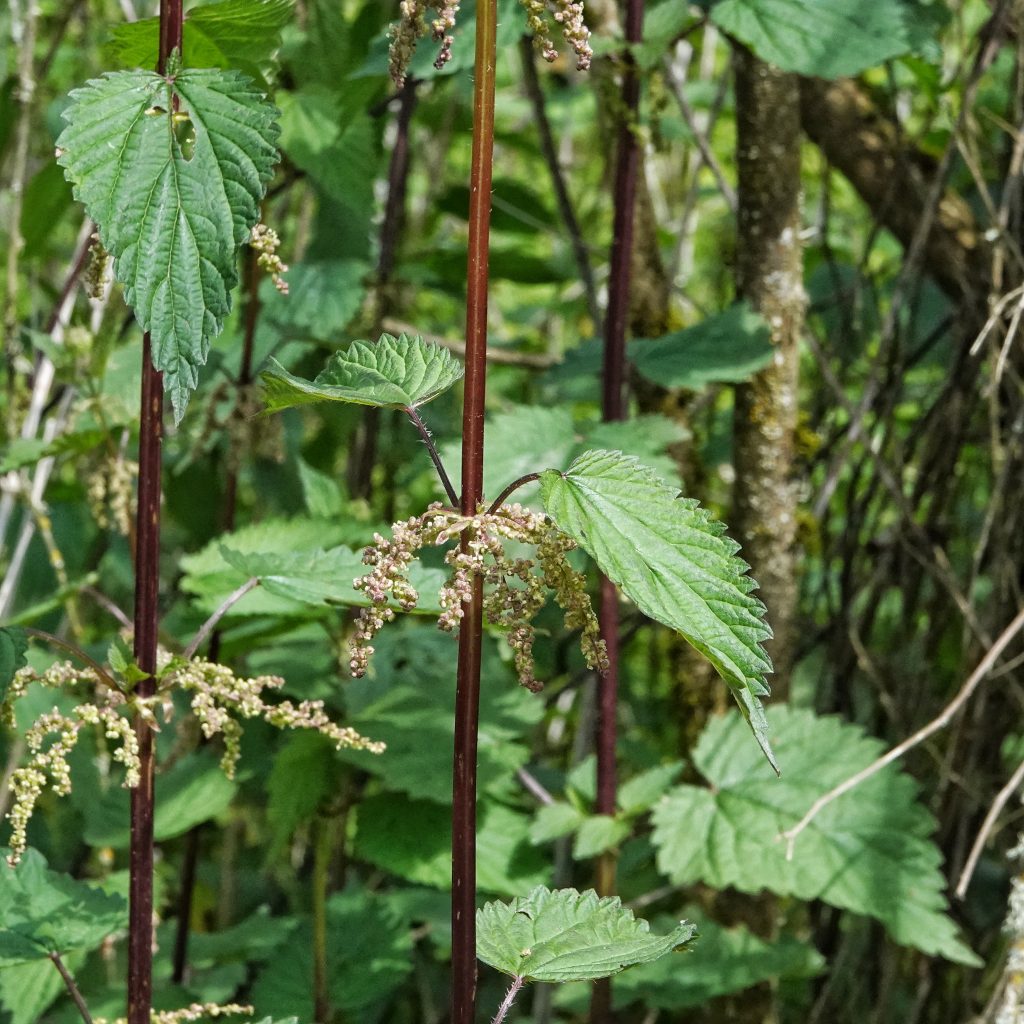
In addition to the number of arthropod herbivores that feed on these plants, they also attract many beneficial insect predators (as discussed in James et al.; 2015), especially minute pirate bugs (Oriussp.), which appear to be attracted to chemicals in the plants even in the absence of prey, and are known to feed on the pollen produced by the nettle flowers. James and company found so many insect predators (over 30 species including lacewings, ladybird beetles, true bugs, flies, and wasps) on and around the nettles they studied that they think that nettle patches may provide a staging area for beneficial insect predators, and that nettles located near agricultural fields could well encourage natural biocontrol agents for agricultural pests.
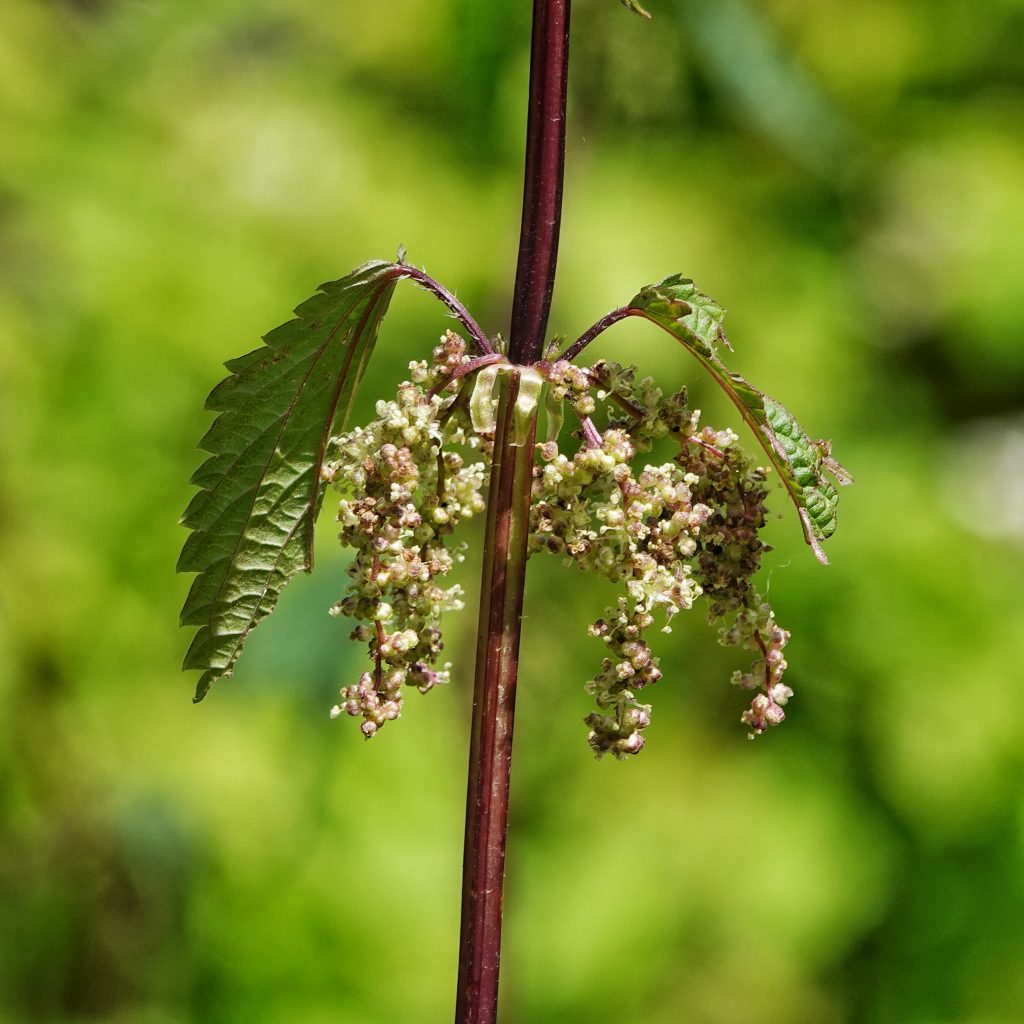
Description-Perennial; tall (up to 8’) plant with erect stems and opposite leaves along the whole stem; leaves are 2.5-6” long, pointed ovals, with serrate margins; stems more or less round, greenish to black; flowers are tiny, green catkins clustered in the leaf axils; stems, petioles, and at least the underside of the leaves are stinging; usually grows in dense stands due to rhizatomous reproduction.
Similar species–Urtica urens is smaller (<20” tall), with smaller leaves (<1.5” long); Stachys spp. have square stems, obvious individual flowers, smell like moldy socks, and do not sting.
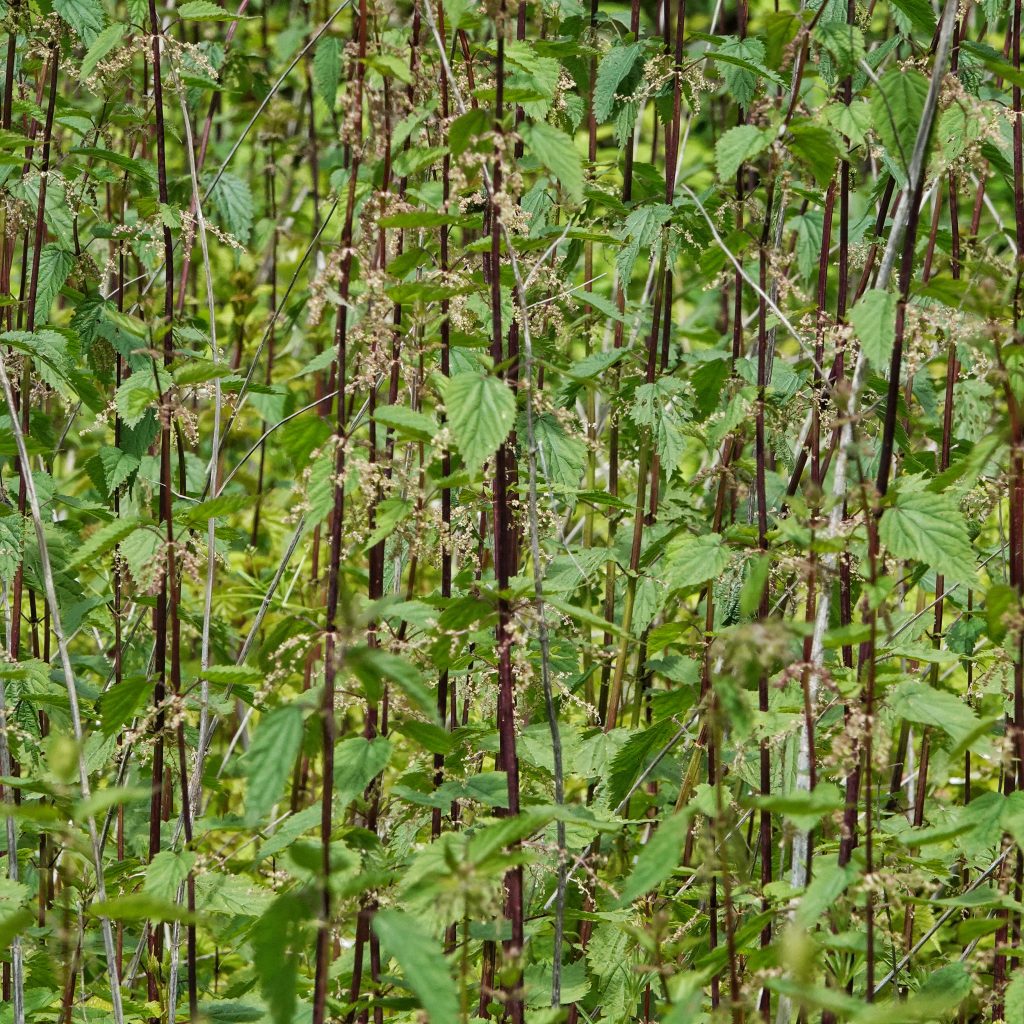
Habitat– Moist, deep, rich soil, often in open understory of forests and woodlands, but can be found in open (even desert) wetlands, up to subalpine elevations.
Range-This species is found worldwide; in our region the subspecies U. d. gracilis can be found region wide in appropriate habitat (absent only from the hottest, driest parts), U. d. dioica is most common west of the Cascades (though it’s not nearly as common as gracilis), and U. d. holosericeais is found only east of the Cascades where it replaces gracilis in the most arid regions.
Reproductive timing-May to September; it produces no nectar, and though it attracts insects to its pollen, it is actually pollinated mostly by wind.
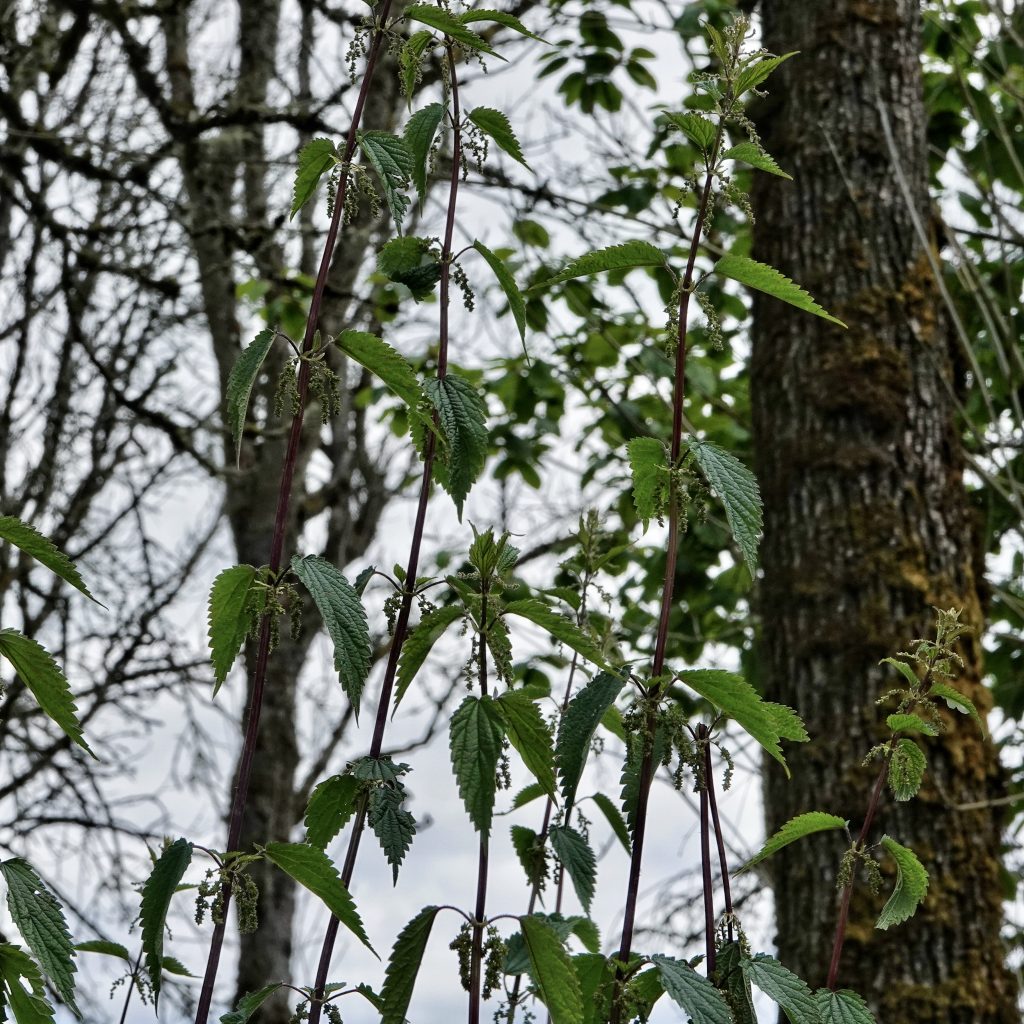
Eaten by– Larval host for the moths Abrostola urentus, Hypena californica, H. humuli, and H. decorata, Herpetogramma abdominalis and H. pertextalis, Clepsis fucana, Anthophila alpinella and A. fabriciana, and Marmara sp., among others, and the butterflies Vanessa cardui, V. virginiensis, V. annabella, and V. atalanta, Nymphalis milberti, and Polygonia satyrus; leaf mining flies in Agromyza; Eupteryx leafhoppers; snails and slugs eat the leaves of nettles and their feces may be dense with stinging hairs; since there are at least ten species of leaf beetles (and the same thing is true for stink bugs) that utilize this plant in eastern North America I am sure some of our western species do as well, although I can’t find specific information saying so; a wide variety of insects come to it for pollen; a variety of birds eat the seeds

Etymology of names–Urtica is from the Latin word for ‘nettle’, which in turn came from the Latin word for ‘to burn’, an obvious reference for anyone who has brushed bare skin against this plant. The specific epithet dioica is from the Greek words for ‘two houses’, and refers to the male and female flowers being on separate plants in the European (and named first) subspecies.
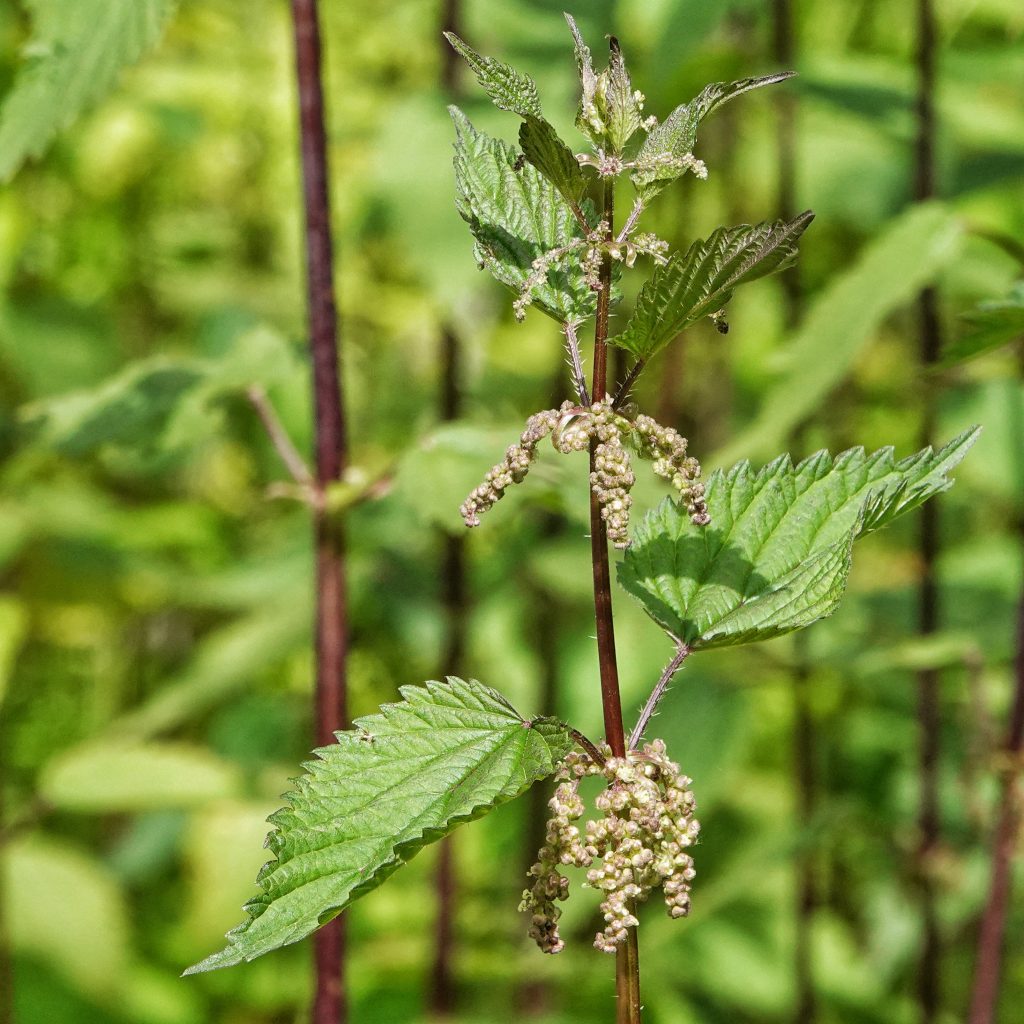
https://www.cabi.org/isc/datasheet/55911
https://pfaf.org/plants/edible-weeds-urtica-dioica-stinging-nettle/?amp=1
BRIT – Native American Ethnobotany Database
Urtica dioica in Flora of North America @ efloras.org
E-Flora BC: Electronic Atlas of the Flora of BC
Herpetogramma abdominalis – 10,000 Things of the Pacific Northwest
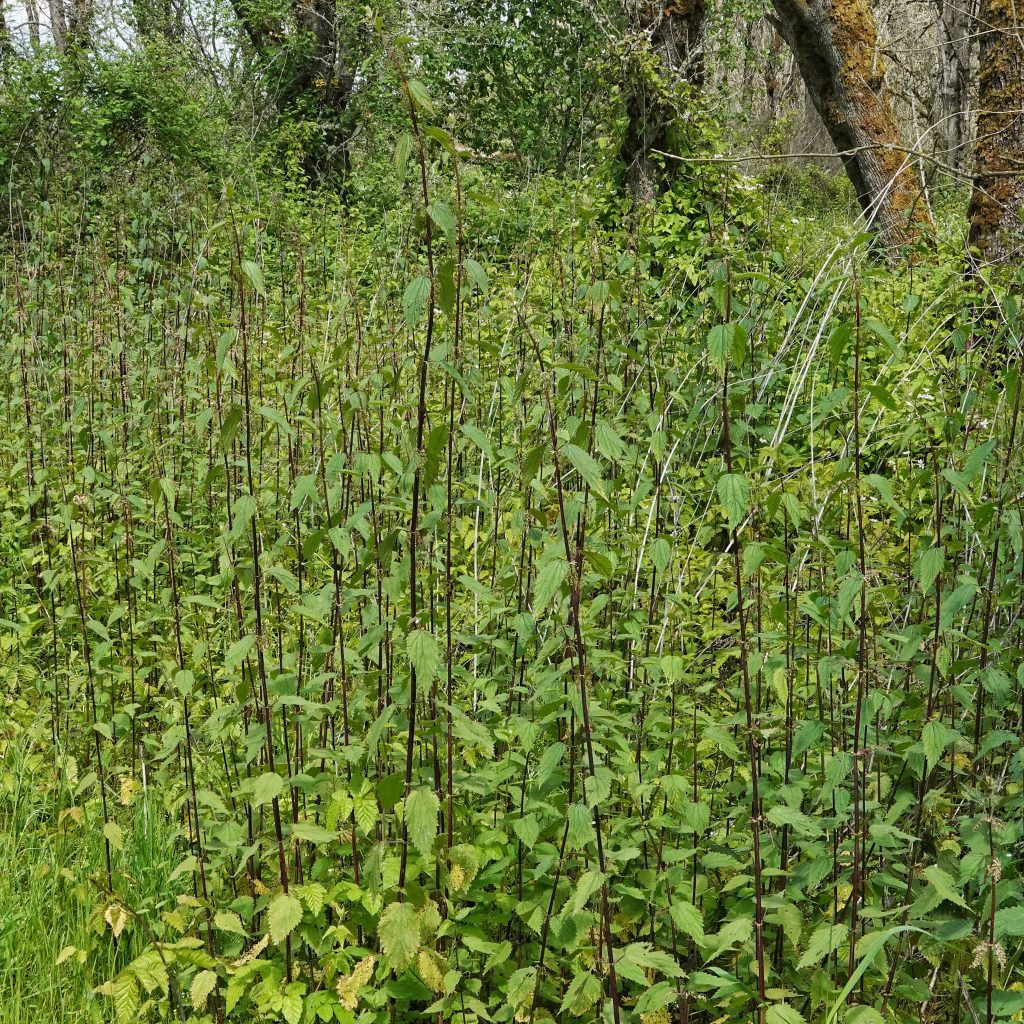
Another interesting fact is that there is an annual nettle-eating contest in England! (https://www.bbc.com/news/uk-england-dorset-61943093)
Oh, and West Coast Lady (Vanessa annabella) caterpillars also feed on nettles.
Thank you! I had thought there was a 5th nymphalids that used them, but those were the only 4 found.
Last week I was at Sauk Mountain. At the start, near the trailhead, we noticed an earthy, organic, um, well, unpleasant odor. We went on the hike and on the way back out, at the same location, we noticed nettles. Your ‘moldy socks’ comment makes me wonder if that’s what we smelled.
It very well could’ve been some hedge nettles (Stachys sp.) The leaves are very similar looking, and that musty smell is distinctive!